May 2023
Fig.1
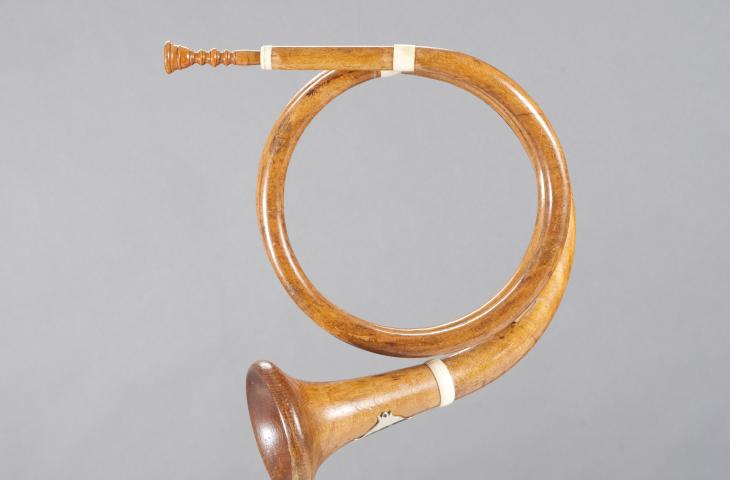
Wooden trumpet, François de Vestibule, 1878, inv. 0573
Fig.2
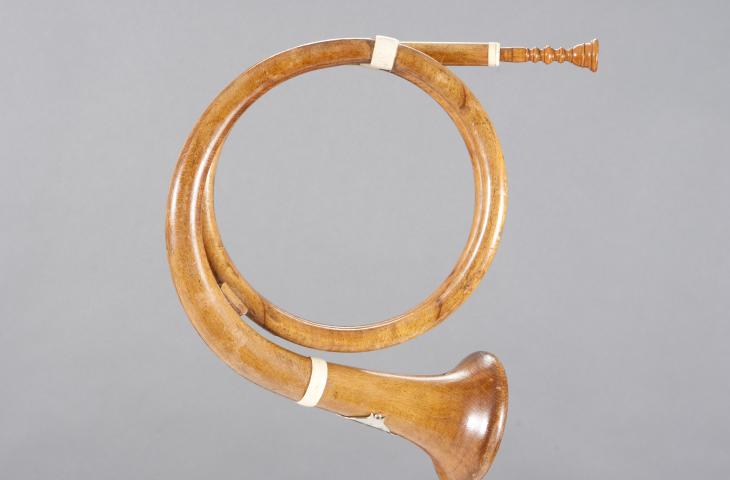
Wooden trumpet, François de Vestibule, 1878, inv. 0573
Fig.3
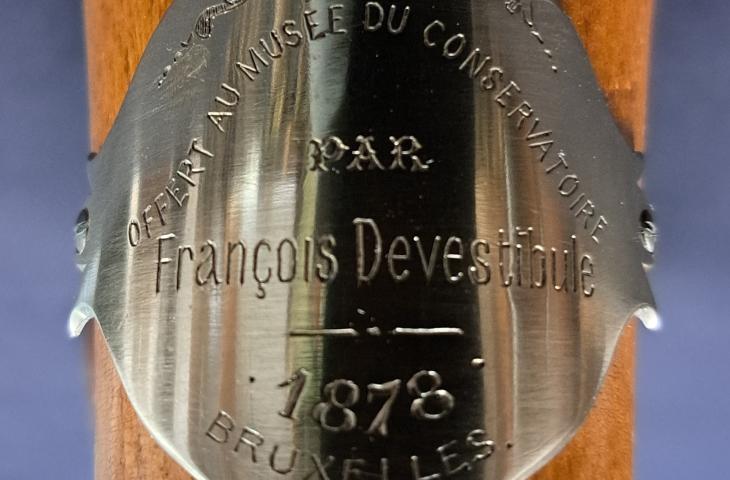
Metal plate with inscription
Fig.4
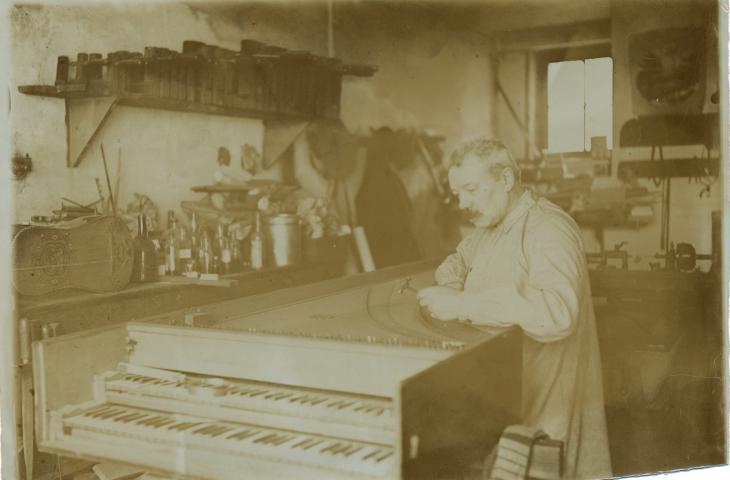
De Vestibule at the museum
Fig.5
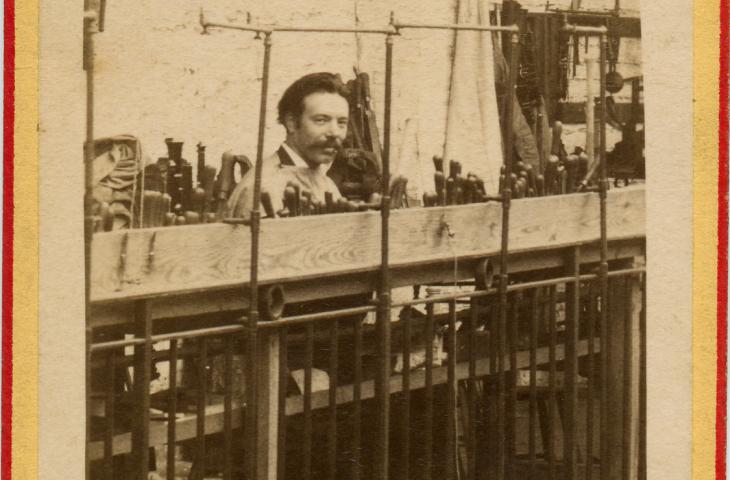
De Vestibule in the Mahillon workshop
Fig.6
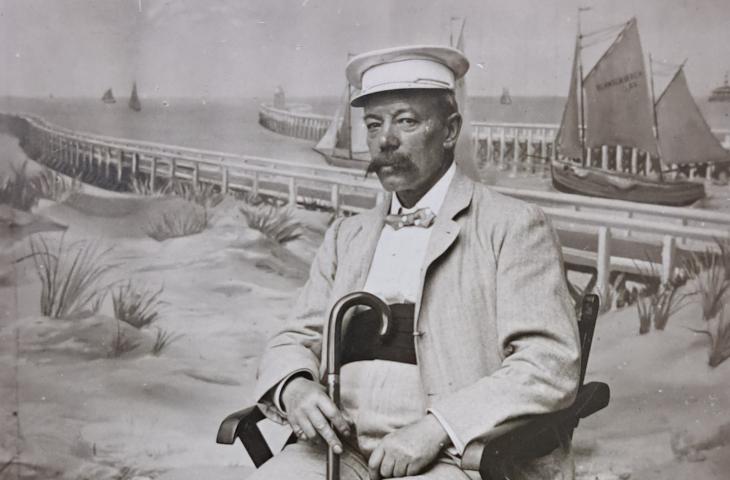
De Vestibule beach portrait
The brass family ?
In common parlance, the trumpet is classified as a brass instrument. However, this is somewhat misleading because many instruments in this category are not made of brass. It is true that the most common material is brass, an alloy of copper and zinc, to which traces of lead, tin, etc. may be added. These instruments are sometimes also silvered, gilded, nickel-plated or coated with other elements. But trumpets have been or are still being made of various materials, such as bronze, glass, wood, bone, ivory, aluminium, plastic, plaster, etc.
Let us return for a moment to systematic classification. In the classification commonly used at present, particularly by the CIMCIM (International Committee for Museums and Collections of Instruments and Music), the term “brass instruments” is not used and the trumpet is classified in class 423 among the instruments known as “labrosones”, a neologism for “lip-vibrated instruments” that is gaining ground in the scientific literature. It is indeed the lips of the player that act as a reed and set in vibration the column of air contained in the tube of the instrument.
Why making a wooden trumpet?
Victor-Charles Mahillon, the first curator of the Brussels Conservatory Instrumental Museum – that would later become the MIM – was also an instrument maker who was very interested in musical acoustics. In order to demonstrate that air is the only vibrating element in wind instruments and that the material used in their manufacture does not influence their timbre, he made wooden trumpets, as his father Charles had done before him, on an experimental basis. In fact, a specialised craftsman from the Mahillon factory, Frans (or François) De Vestibule (1849-1920), who was seconded to the instrumental museum, was the real maker.
The MIM’s collections contain an surprising natural trumpet – i.e. without valves or other mechanisms to change the pitch of the notes – whose tube is rolled up on itself, rather like a hunting horn. It is indeed a trumpet, with its typical narrow, mainly cylindrical bore. The internal proportions of the tube – that is, the ratio of its length to its width – are those of a cavalry trumpet in E-flat. The wood (beech), is hollowed out in the form of half-shells which are then glued together in sections, the joints of which are reinforced with bone ferrules. A few wooden spacers add rigidity to the whole. The mouthpiece, also made of wood, was turned from a block of wood.
Big moustache and skilful fingers
This rounded trumpet has a metal plate on the bell with the inscriptions that can be translated as “OFFERED TO THE CONSERVATORY MUSEUM / BY / François Devestibule / 1878 / BRUSSELS”. Behind his “robust stature and a hemp moustache” (Revue musicale, 1903), Frans De Vestibule was the museum’s all-rounder, a preparer, maker, restorer, tuner, conveyor, guide, assistant and so on. He was responsible for the maintenance of all types of instruments in the museum, which at the time were maintained or restored to playable condition for pedagogical reasons, sometimes to the detriment of the conservation standards as they are applied today.
A little maintenance would be necessary to make this trumpet sound today because a foreign body is obstructing the air column: maybe a remnant of Frans De Vestibule’s moustache? In any case, some work lies ahead for our restoration workshop!
Text: Géry Dumoulin
Revision of the Hornbostel-Sachs Classification of Musical Instruments by the MIMO Consortium